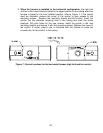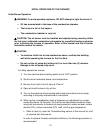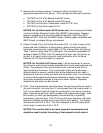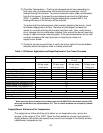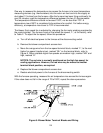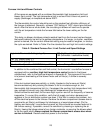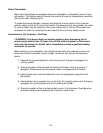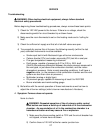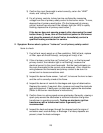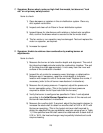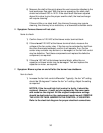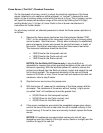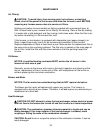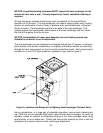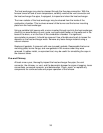28
3) Confirm the room thermostat is wired correctly, set on the “HEAT”
mode, and “calling for heat”.
4) For all primary controls, lockout can be confirmed by measuring
voltage from the oil primary safety control to the burner motor. If none,
depress the oil primary reset button. [On the Honeywell oil primary
control, lockout has occurred if the indicator light (an LED) is rapidly
flashing; depress the oil primary reset button.]
If the burner does not operate properly after depressing the reset
button three (3) times, turn off the electrical power to the furnace
and close the manual oil shutoff valve. Immediately contact a
qualified heating contractor for service.
B. Symptom: Burner short cycles or “locks out” on oil primary safety control.
Items to check:
1) Fuel oil tank nearly empty or oil flow restriction. Refill oil tank, replace
oil filter, open all shutoff valve(s), and purge oil line(s) of air.
2) If the oil primary control has not “locked out” (e.g., on the Honeywell
primary control, the indicator light is not flashing), measure the
electrical current to the room thermostat. Set the heat anticipator on
the room thermostat to the current value measured. Also, check the
wiring between the thermostat and primary control to be sure it is
correct and no loose connections exist.
3) Inspect the burner flame sensor, “cad cell”, to be sure the lens is clean
and the cell is correctly aimed at the flame.
4) Inspect the burner oil nozzle for blockages and signs of deterioration.
Replace the nozzle, if required. Also, measure and reset the electrode
gap and alignment. If badly worn or deformed, replace the electrodes.
(Refer to the burner manufacturer’s instructions.)
5) Confirm there is a strong spark across electrodes. Generally, viewing a
spark jump across the electrodes is sufficient indication the ignition
transformer is operating correctly. Testing an electronic ignition
transformer with a transformer tester is generally not
recommended.
6) Inspect the heat exchanger through the cleanout ports for signs of
excessive soot, scale buildup, or blockage. If a heavy deposits are
present, clean the heat exchanger.



